#saint walpurga
Photo

Walpurgisnacht
196 notes
·
View notes
Text
#lionheart#the lion the witch and the wardrobe#saint walpurga#horace walpole#wallpaper#walpapers#aslan#cannes lions#original photographers#film photography#book photography#photoblog#photographers on tumblr#photography#photooftheday#street photography#travel photography#photogram#photoshoot#natural history#natural#long lake#lakers#gta online#gta 5#gt var#takipçiler#tumblr takipçi#takipçikazan#fyppage
5 notes
·
View notes
Text
Obscure German Saints
Saint Walpurga
Walpurga or Walburga (Old English: Wealdburg, Latin: Valpurga, Walpurga, Walpurgis, Swedish: Valborg; c. AD 710 – 25 February 777 or 779), also spelled Valderburg or Guibor, was an Anglo-Saxon missionary to the Frankish Empire. She was canonized on 1 May c. 870 by Pope Adrian II. Saint Walpurgis Night (or "Sankt Walpurgisnacht") is the name for the eve of her feast day in the Medieval period, which coincided with May Day; her feast is no longer celebrated on that day, but the name is still used for May Eve.
Her feast day is Feburary 25th
Walpurga is the patroness of Eichstätt and Weilburg, Germany; and she is invoked as special patroness against hydrophobia, in storms, and also by sailors.
2 notes
·
View notes
Text
Mischief Night
Tonight is Mischief Night in the United States, Canada, and the U.K. keep the pranks harmless, kids.
Tonight is Mischief Night, an informal holiday celebrated by children and teenagers in the United States, Canada, and the U.K. It’s celebrated on the night before Halloween (usually October 30). On this night, people are supposed to play harmless pranks on their neighbors or family members.
I am not a fan of pranks, but the common pranks include egging houses or toilet-papering trees. A…

View On WordPress
1 note
·
View note
Text
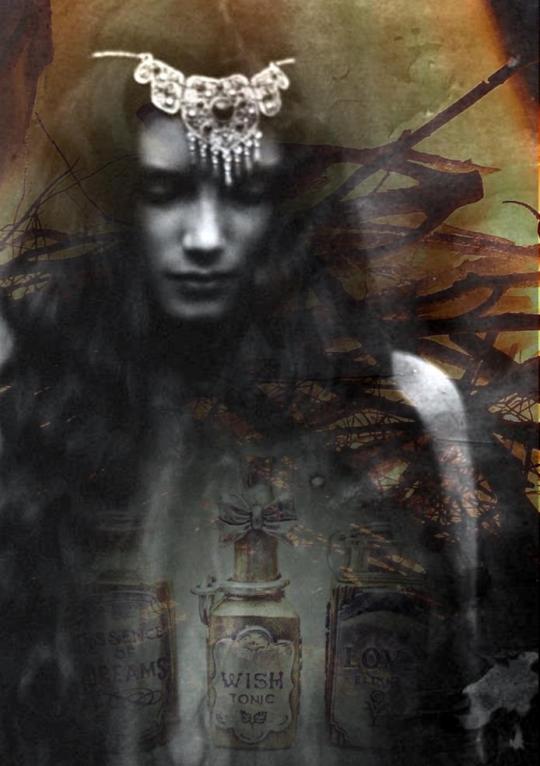
Jaanika Talts Artist
Walpurgis Night!
In Estonia, Volbriöö is celebrated throughout the night of 30 April and into the early hours of 1 May, where 1 May is a public holiday called "Spring Day" (Kevadpüha). Volbriöö is an important and widespread celebration of the arrival of spring in the country.
Influenced by German culture, the night originally stood for the gathering and meeting of witches. Modern people still dress up as witches to wander the streets in a carnival-like mood.
The current festival is, in most countries that celebrate it, named after the English missionary Saint Walpurga (ca. 710–777/9).
As Walpurga was canonized on 1 May (ca. 870), she became associated with May Day, especially in the Finnish and Swedish calendars.
The eve of May Day, traditionally celebrated with dancing, came to be known as Walpurgisnacht ("Walpurga's night").
The 17th century German tradition of a meeting of sorcerers and witches on May Day is influenced by the descriptions of Witches' Sabbaths in 15th and 16th century literature.
#Walpurgis Night#Walpurga#Saint Walpurga#Estonia#German#folkways#myth#traditions#May Day Eve#Walpurgisnacht#Walpurga's Night#Spring#Volbriöö#ancient ways#Spring Day#Kevadpüha#witches#festival#celebration#Jaanika Talts Artist#artwork#art#imagika#SoulSkin#Wish
1 note
·
View note
Text
thinking about how Faust is so aloof and distant with everyone, and wields a big fuck-off zweihander, but nearly all of her IDs and EGOs are supportive in nature (with the notable exception of L corp remnant), providing debuffs or sanity healing as opposed to direct damage. is it a facade and she actually cares? or are the supportive abilities more like a representation of her strategic genius? (the latter feels much more applicable to Grip faust than the former)
i don’t know, but i find it interesting nonetheless
#limbus company#project moon#lcb faust#it sucks that faust's chapter is likely the last one#we're gonna be waiting a while#back to the first point i am reminded that in the city a zweihander is a symbol of stability and defense due to the Zwei Association#which makes faust's choice of weapon even more interesting#speaking of Walpurgisnacht is the name of a german holiday#specifically the night before a feast held in honor of Saint Walpurga#who was famous for fighting both disease and witchcraft#interesting name for the sword of a genius scientist#i wonder if this will gain more relevance later
30 notes
·
View notes
Text
April 2024 witch guide
Full moon: April 23rd
New moon: April 8th
Solar eclipse: April 8th
Sabbats: None
April Pink Moon
Known as: Breaking Ice Moon, Budding Moon of Plants & shrubs, Budding Tree Moon, Eastermonath, Frog Moon, Green Grass Moon, Growing Moon, Hare Moon, Moon of the Red Grass appearing, Moon When Geese Lay Egss, Moon When thd Ducks Come Back, Ostarmanoth, Planters Moon, Seed Moon, Sucker Moon & Wind Moon
Element: Fire
Zodiac: Aries & Taurus
Nature spirits: Plant Faeries
Deities: Anahita, Bast, Ceres, Cernunnos, Hathor, Herne, Ishtar, Kali, Tawaret & Venus
Animals: Bear & wolf
Birds: Hawk & magpie
Trees: Bay, forsythia, hazel, lilac, pine & willow
Herbs: Basil, chives, dandelion, dill, dogwood, dragon's blood, fennel, geranium, milkweed & thistle
Flowers: Daisy & sweetpea
Scents: Bay, bergamot, patchouli & pine
Stones: Angelite, beryl, diamond, garnet, malachite, quartz, ruby, sapphire, sard, selenite & zircon
Colors: Blue, brown, crimson, gold & green
Energy: Authority, balance, beginnings, change, fertility, growth, leadership, opportunities, overcoming obstacles, personal skill development, re-birth, self-evaluation, self-reliance, spirituality, temper control & willpower
April’s full Moon often corresponded with the early springtime blooms of a certain wildflower native to eastern North America: Phlox subulata—commonly called creeping phlox or moss phlox—which also went by the name “moss pink.” Thanks to this seasonal association, this full Moon came to be called the “Pink” Moon.
Other celebrations:
• Walpurgis Night - April 30th
Also known as: May Eve
The origins of the holiday date back to pagan celebrations of fertility rites & the coming of spring. After the Norse were Christianized, the pagan celebration became combined with the legend of St. Walburga, an English-born nun who lived at Heidenheim monastery in Germany & later became the abbess there. Saint Walpurga was hailed by the Christians of Germany for battling "pest, rabies, & whooping cough as well as against witchcraft". Christians prayed to God through the intercession of Saint Walpurga in order to protect themselves from witchcraft, as Saint Walpurga was successful in converting the local populace to Christianity. Although it is likely that the date of her canonization is purely coincidental to the date of the pagan celebrations of spring, people were able to celebrate both events under church law without fear of reprisal.
Walpurgis Night is still a traditional holiday celebrated on April 30th in northern Europe & Scandinavia. In Sweden typical holiday activities include the singing of traditional spring folk songs & the lighting of bonfires. In Germany the holiday is celebrated by dressing in costumes, playing pranks on people & creating loud noises meant to keep evil at bay. Many people also hang blessed sprigs of foliage from houses & barns to ward off evil spirits, or they leave pieces of bread spread with butter & honey, called ankenschnitt, as offerings for phantom hounds.
Sources:
Farmersalmanac .com
Llewellyn's Complete Book of Correspondences by Sandra Kines
Wikipedia
A Witch's Book of Correspondences by Viktorija Briggs
Encyclopedia britannica
Llewellyn 2024 magical almanac Practical magic for everyday living
#witchblr#wiccablr#paganblr#witch community#witches of tumblr#tumblr witches#tumblr witch community#correspondences#april witch guide#witch guide#witch tips#beginner witch#baby witch#witchcore#witchcraft#grimoire#book of shadows#moon magic#full moon#pink moon#wheel of the year#pagan#spellbook#spells#witchy stuff#spirtitual#eclipse#witch#GreenWitchcrafts#april 2024
96 notes
·
View notes
Text
Looking back over my screenshots again, I noticed something that bothers me: "Walpurgisnacht" is a name supposedly given to this witch by magical girls (and not what she calls herself, unlike the other witches we encounter), and yet that name appears in heavily stylized runes on her countdown signs in the original series. Why is that? Am I missing something?

The same runes are also in the Eternal movie, although they are a bit more legible. Nothing else appears to have changed overall, although the shading/contrast on the ring and "peacock tails" (probably stylized lotus flowers common in Buddhist mandalas?) is switched up.

The art style here is reminiscent of sixteenth- and seventeenth-century European woodblock prints during the time of the original witchcraft trials. This movement was stoked in large part by the widespread proliferation of lavishly illustrated printed pamphlets, which detailed witches' misdeeds in lurid detail, and popularized many archetypes we now associate with witches, from brooms and black cats to deals and dances with the Devil.

Witches dancing with devils, featured in The History of Witches and Wizards (1720).
Similar woodblock prints, likely representing primary sources, can be seen in the background in Homura's apartment as part of her research into Walpurgisnacht, including several with dancing figures.

These figures can be seen as Walpurgisnacht is ultimately broken up in the final episode.

Just for some fun visual parallels, compare to this shot from the recap movies that wasn't in the original TV release. The main difference is that all of the figures of Homuras are the same, whereas the ones in Walpurgisnacht's circle seem to be different.

The woodblock print in Homura's apartment depicts all the dancers as identical, while the later shot makes them look more like Walpurgisnacht's individualized familiars--which they might well be. Comparison to the Clara Dolls--a large number of familiars repeatedly described as being a match for or counterpart to magical girls with individualized designs--is also inevitable.
Ironically, the Christian saint Walpurga was supposed to protect against witchcraft, but her saint's day (April 30-May 1) ended up being conflated with the witches because it occurred at the same time as Hexennacht (German for 'Witches' Night'), when witches were said to dance with/in honor of the devil on Mount Brocken--and thus when people were most in need of St. Walpurga's protection. Goethe draws on this tradition in Faust, Part One (a major influence on PMMM) for the scene where Mephistopheles takes Faust to the Brocken in order to witness the celebrations--which is also one of the texts depicted in Homura's apartment.

Another sheet reads "Ein Narr"--German for "the fool", another recurring motif associated with Walpurgisnacht (and also Homura).
Given the accuracy of these documents, these woodcuts are presumably based on eyewitness accounts (possibly magical girls, since ordinary people see Walpurgisnacht as a storm) where Walpurgisnacht appeared but was apparently not permanently defeated. Combined with Walpurgisnacht's ability to appear--and presumably disappear--without warning, and the fact that she's large enough to show up on radar as a storm, this suggests to me that Walpurgisnacht might be a time traveler or possess a similar ability to "exit the stage" and only reveal herself at the most dramatic moment(s) possible. Not only would this fit with her cog/stage motif, it would make her an even more fitting narrative foil for Homura, and add yet another parallel between them.
For both witches and ordinary humans alike, Walpurgis Night is traditionally celebrated with dancing and bonfires. Not only is Homura's name is a homonym for 'flame', Rebellion is chock full of ballet motifs, and she is last seen dancing alone in the moonlight late at night--presumably during the "witching hour" (which, depending on the source, is either between 3-4 a.m., or the hour immediately after midnight. Given the earlier scene of Homura becoming a witch as the clocks strikes midnight, I lean towards the latter interpretation).
Even more suggestively, Homura is now diegetically the Devil and appears to have taken on Kyubey's role as a contractor. If so, this strongly implies that she (and/or her double?) will have a personal relationship with magical girls as the one to whom they sold their souls to gain their power, just like historical witches were said to do with Satan. And given that these historical witches supposedly gathered on Walpurgis Night to honor the Devil... well, that does put Walpurgisnacht's likely (re)appearance in a new light, doesn't it?
...and if the 'Walpurgis' of Walpurgis no Kaiten is indeed the same Walpurgisnacht we saw before, then some timey-wimey/reality-bending/fourth-wall breaking shenanigans are afoot.
It's funny because "what were YOU doing at the devil's sacrament?" is usually meant as a tongue-in-cheek joke, but if PMMM continues to take these references seriously, we might actually get to find out!
82 notes
·
View notes
Text
i will be the first to admit that this might be reaching a bit. also discussions of religious concepts in lgts ahead
so catholicism in lgts is explored through the struggles of living in a small catholic town like kieferberg, and literally everything about walpurga, the forest deity turned saint. but imo there's also something to be said about how elise obtains the tender flesh: this might be a reflection of the sacrament of the eucharist as understood during the medieval era.
but what is the eucharist anyway?
in catholic doctrine the eucharist is supposed to be the body of christ manifested through transubstantiation: the transformation of bread and wine into his flesh and blood respectively. this is based on the events of the last supper in the bible, wherein before his death jesus offers his body to his disciples through the bread and wine that they share. thing is, current understanding of transubstantiation is moreso in a metaphysical sense: catholics who do believe in it don’t actually think that they’re eating jesus’ physical body.
that wasn't always the case with medieval catholicism, however. there were theorists like st aquinas and berengar who argued for a metaphysical transubstantiation, but powerful church officials like cardinal humbert (who actually forced berengar to recount his claims) also believed that the faithful partaking in the eucharist were actually eating the literal, physical flesh and blood of jesus. there was quite a bit of concern too because of this: the body of christ, torn apart and chewed on by not just the faithful, but potential sinners?
the average catholic of that time probably didn't care much for the specifics of how transubstantiation worked (either way, the bread is/represents jesus, whether or not that was physical or not), but the point is there was an ongoing debate—if only among high-ranking church officials and theologians—about what the eucharist really was. now keep in mind that aforementioned literal physicality of the eucharist, and how similarly that plays out to the relevant witching hour segments in lgts.
i want to first highlight the scene where the crows in murim's domain rip out parts of elise's hair for the wheat testament:



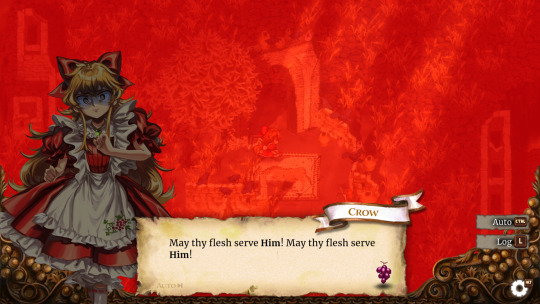
and the aftermath:



they sure are hungry, huh? and the way they get at elise is pretty violent, judging by her screams and the sounds of tearing flesh. their carnal hunger, expressed through their lines and the violence in how they form the wheat testament from her hair, brings to mind similar fears of an animalistic, near sacrilegious ingestion of a certain sacred body turned bread, only this time realized in a demonic trial. in other words, the entire trial subverts christ's supposed physical presence in the bread. besides, it's stated outright that elise is meant to physically combine a piece of her body—her hair—into that wheat.
she does just that in the windmill:



her hair baked into the (apparently unleavened) bread is the tender flesh that the crows hungered for, that would eventually find its way onto ozzy's table.
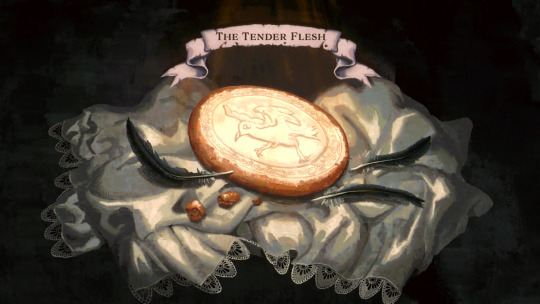
so the process of acquiring the tender flesh seems to imitate that transubstantiation in the celebration of the eucharist. if that's the case, i wonder why ozzy and his minions would design them this way…
btw here's my sources for medieval transubstantiation (despite my unhinged rambling i did do a bit of research):
https://www.jstor.org/stable/23964057 (Ego Berengarius by Chadwick, H., 1989)
https://global.oup.com/academic/product/some-later-medieval-theories-of-the-eucharist-9780199658169 (Some Later Medieval Theories of the Eucharist by Adams, M. M., 2010)
#little goody two shoes#lgts#elise lgts#father hans' study#considering that the game takes place from the pov of someone who's not a fan of the church#which considering that it's kieferberg is understandable#it's interesting how readily she throws herself into what's basically a subversion of one of catholicism's most central sacraments#and to her credit she does technically get what she wants#even if it is a monkey's paw#it gives me Feelings#haven't analyzed the sweetest nectar in connection to this yet#but there are some parallels i feel#or similar functions#as the wine accompanying the bread in the eucharist#so the sweetest nectar—which does look like red wine and is made from a mixture of blood and water—accompanies the tender flesh#definitely did not plan on posting this during holy week no not at allllll
23 notes
·
View notes
Text
✨Who did it?✨
Or, as an alternate title:
I can’t believe I have to play Devil’s Advocate for Ozzy…
Yes, your honor, he did haunt Elise until she passed away, ruined Roman’s life as collateral, sort of kidnapped Henri and almost murdered Goldia. I can’t deny that he is, in fact, the main villain in Pocket Mirror and sole responsible for the events in that game.

However!
In Little Goody Two Shoes, he isn’t the only schemer behind the scenes. Our second player is Walpurga — and I don’t think we’re giving her enough credit. It’s easy to misjudge her as a secondary threat in Elise’s path when, actually, she’s the main instigator.
I dare to say that she’s even the one to start it all, the one who led Elise to her eventual downfall! Ozzy just took the merit after she was out of the picture.
But before I go through the events of the game, let’s review what some characters have to say, in special when it comes to the lore. We’re going to be judging…

… their credibility.
Our dear Rozenmarine here is talking about Ozzy by the way, and we have already established that he is, in no shape or form, a benevolent entity. Nonetheless, she’s the most truthful character towards Elise: she even warns her of the heavy price she’ll have to pay for her wish. Not even Walpurga, who is the first one to mention all of this information, alludes to such a thing; in fact, she even outright lies about it when she says that the Gifts will be “all that’s requested in return”.
The other character that gives the most exposition is Father Hans, and like Rozenmarine and Walpurga before him, we have to take his words and judgement with a grain of salt — in special when it comes to Walpurga and her sanctification.



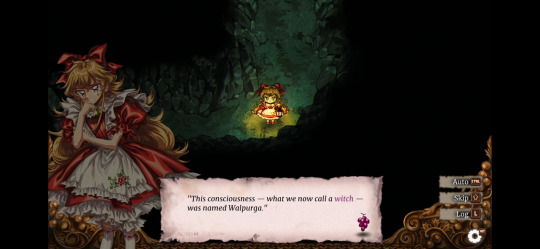
Case in point: if a witch is a human woman and Walpurga is the consciousness of the woodland surrounding Kieferberg, can we truly call Walpurga a witch? Or is a human woman a forest now?
Despite the flaws in his logic, Father Hans doesn’t question much the nature of what he’s trying to summon and when he does, briefly worrying about the possibility of Walpurga being a demonic entity masquerading as a witch, he foolishly believes he’ll be able to take care of it. If you’re aware of one of the endings, you know how well that went.
His judgement, therefore, cannot be trusted.
On one hand, the demons themselves refer to Walpurga as a witch as well — and it’s likely they know more about this than our two faced priest. On the other, they also don’t hide their contempt by calling her creature and wretched thing, so it’s just as probable they’re insulting her and refusing to respect her as a fellow “patron saint”.
Meanwhile, in one bad ending, Rozenmarine is way more respectful and names her “old god”…
Either way, my previous statement about Father Hans still stands. However, does that make the demons a more trustworthy source of information? Several characters —mostly Golden Maidens and Walpurga, who has ulterior motives— disuade Elise from listening to them, and to tell the truth, they don’t reveal much about themselves or their reasons to not raise suspicion. In a twist of irony though, they do reveal the deceit of others more than being deceitful themselves: it’s Murim who points out Walpurga disguising herself as Rozenmarine and being the actual culprit behind the horses and Apfel’s disappearance, after all. And it’s also Ozzy who lets Elise know that Walpurga had been misleading her from the very start — although far too late, at the very end: “You’re yet to pay for what you truly desire! That witch made you think otherwise, did she?”
In conclusion, we can’t take what they say at face value — or at least, not all of it. Still, they do offer important insight into the lore if you know who and what to believe.
An interesting bit I want to highlight and that gives a different interpretation of the game is related to Walpurga’s true identity: if she isn’t a witch, but a being similar to Ozzy and his Marquises, her inactivity during the 18 years Elise was alive could be linked to the need of a witch of her own, since they act as a sort of medium between realms.
Although that raises the question: who could be Walpurga’s witch? Let’s review the story from the beginning first.
Around the time of Elise’s birth, in a far away place, Rozenmarine and her dreams of fate were born as well, while one of the last remnants of Walpurga’s cult was being burnt at the stake — that, instead of Elise being conceived, might have been what truly weakened Walpurga.
Later, during their pilgrimage, her granny taught Rozenmarine everything she knew, including Ozzy’s folk tale. Like His name being lost to time, the reason his story was spread about in Rozenmarine’s coven could also had been forgotten; Elise did mention it sounded like a cautionary tale and perhaps, it originally had been — do demons like competition, I wonder.
As previously said, Elise’s genesis had fascinated Walpurga. She wanted back what was taken from her and also recreate what Ozzy had done that day to no avail. No matter how much that ate at her, in 18 years, she didn’t target Elise yet.
Not even Father Hans, perturbed by Granny Holle’s dead bed confession 10 years ago, acted upon his suspicions until both demons and Walpurga made themselves known in town. Or maybe he did, if Elise saying she felt ostracized after her granny passed away is anything to go by.
It’s when Rozenmarine reached Kieferberg, when everything happened all at once again: she met Flocke and her fateful dreams stopped; Elise got attacked by roots in her own home, but never again, and she dreamt of Ozzy’s realm even before getting the shoes; and a windstorm hir town, stirring Father Hans into action, believing it was the result of Granny Holle’s pact with the demons years ago.
Suddenly, everybody had a bone to pick with Elise. What changed? Rozenmarine.

This scene here is what makes me think Rozenmarine is Walpurga’s witch. In the bad endings where Walpurga kills and possesses Elise, she does so by impaling her with roots or branches like the ones that appear here. Not to mention, it all occurs next to a St. Walpurga’s statue, like it were a macabre foreshadowing of her involvement in the plot. If she could always have done an attack such as this, why then and not before? Elise had been alone for years, living in a house far away from town — nobody would have heard her scream for help. It’s, however, easily explained if Walpurga required of an intermediary to physically manifest.
The curious thing is, like I mentioned earlier, that it doesn’t happen again. For some reason, Walpurga doesn’t get a second chance to attack Elise within her own home. Coincidentally —or not—, in the next morning, we are introduced to Flocke, who mostly stays around the house with Rozenmarine.
That incident, and Rozenmarine’s dreams about fate coming to an end, I believe are related to Flocke’s presence. It would be in Ozzy’s best interest, if Rozenmarine was supposed to aid Walpurga, that she were to be as much confused as possible about her true purpose in Kieferberg — lo and behold, depending on the ending, she has a different idea about what that purpose was.
Thus far, we have a back and forth between Ozzy and Walpurga, and it keeps going: unable to go after Elise directly and following the demon making his move to snatch her first —the shoes—, Walpurga lures the girl into venturing the woodland by telling her about the Gifts.
You’ll think that Ozzy would be pleased with the idea, after all, it played in his favor. But, judging by this mysterious line of his: “Although you didn’t quite need them (the Gifts), did you?” And the look he gives Elise after she returned with the basket, maybe things weren’t going according to plan at all.

This is going to be pure speculation, however, it’s undeniable that Elise and Henri have certain parallelisms between them: their isolation and desire to escape it. Perhaps it goes further than that and Henri’s fate was supposed to be Elise’s as well: I don’t think he had to go through the Trials or sacrifice The Good Company, after all, he wouldn’t have followed her mother’s footsteps had there been someone in his life to alleviate his solitude, and it’s highly doubtful Elise would have told him about the Gifts to begin with. Like Henri, maybe she would have died in her sleep after the deal was sealed and she gave her name as payment, becoming Ozzy’s new loyal servant.
Furthermore, it could be possible that Ozzy only asked for her first born to spite Walpurga, who had been a sore thorn in his side through the whole game. Failing to procure Elise, she lost her only chance to become a woman and bear life in her womb, so what better way to twist the knife than to ask for a child with the sole intention of eating it? Because then, I don’t know how to explain the presence of the moths in the bad endings where he wins otherwise: did Ozzy kill Walpurga offscreen and steal her familiars? Maybe so.
As I said, it’s pure speculation, like Ozzy slowly grooming Henri into a demon, treating his name the same they do their own —with mystery— and giving him duties that eerily resemble what Murim and Aziel are tasked to do. So, in other words, let’s get back in track.
Before Murim was sent to meet Elise, Walpurga had kept herself busy with Eugen’s horses. We later find one, twisted into an enormous monstrosity —inspired by Mari Lwyd, maybe?—, which attacks Elise. It could have been Murim’s doing, however, he had already given Elise the Testament, meaning she had passed the Trial and was free to leave — like in Aziel’s domain. Not only that, the monster only appeared after the reason our heroine stayed —a disguised Walpurga—, finished her creepy monologue.
Walpurga apparently had something to gain if Elise died within the woodland, or else she wouldn’t have forced her back in Murim’s grove to rescue Apfel. In this second incursion, she also made an interesting revelation that supports this theory.


She always wanted the Gifts for herself — like Rozenmarine had explained at the start of the game, they represented Elise’s whole being. If she were to get her hands on the Tender Flesh, she gets Elise’s body; if she gets the Sweetest Nectar, Elise’s blood; and if she gets the Good Company, Elise’s love. And it illustrates so wonderfully why the endings happen the way they happen: if the Tender Flesh and/or Sweetest Nectar are offered, she can’t possess Elise and would rather she died in a pyre or have her turned into a tree; if the three Gifts are correctly offered, Elise is untouchable, the parts representing her under the protection of demonic sigils; and if Elise failed to offer any Gift, because they’re on her person one way or another, Walpurga gets to wear her like a costume.
Why the demons would do nothing after technically being offered and accepting the Gifts in the good endings, is a mystery on its own. Perhaps the commitment they were all on about, was the commitment to love? That brings us to Aziel’s grove and all of its mixed messages.
The next morning Elise rescued Apfel, Flocke can be witnessed throwing a tantrum and promptly leaving — Ozzy obviously displeased with Walpurga interfering so brazenly. The back and forth between the two beings never stops, even if Walpurga makes no further appearances —thanks to Aziel— other than in the endings and those branch attacks inside of Ozzy’s realm which, judging by his sigil after they have already crossed the portals, perhaps he’s trying to dispel instead of summon — the mist is also suspicious, being almost identical to that which follows the moths.
While in her domain, Aziel kept insisting to Elise that she should indulge and dive deeper into her desires, while pointing out that she has yet to discover what they are. It might be a red herring, but after Elise had confessed her wish to the old hag in the beginning of the game, Rozenmarine warned her with urgency that she shouldn’t disclose it to anyone. We’ve got to remember that one of Father Hans’s documents also describes how the woodland —Walpurga— harbored people’s wills, wishes, desires and sins in the past. Was Aziel trying to make our heroine know that her desire had been tampered with? Truth be told, Elise seems to yearn leaving Kieferberg more than riches, giving weak excuses as to why she doesn’t: “… if only it was that easy.” It is, in fact, since in the good endings she just does that. So, it could be possible.
The mixed messages, however, made themselves present during Aziel’s boss fight. After encouraging Elise to pursue her wish until then, Aziel asked to be shown how much Elise cares for her love interest. And if that wasn’t enough, she one-hit kills her if her answers didn’t prioritize her paramour —heavily foreshadowing the requirements for the good endings— while giving her this quote:
“Rather self-serving, aren’t you? You’re not worth my time, let alone His!”
Recalling the scene with the Golden Maidens, you can’t make me believe that some of them truly loved anyone in their lives, lest pass this Aziel’s test. Like, between the three first Golden Girls, who was supposed to be The Good Company: the one being murdered or the one thrown under the bus? The main one fitted the self-serving moniker perfectly and yet, Ozzy was to await for her in his banquet.
The fact that Ozzy would allow the Golden Maidens prowl around and warn Elise left and right is suspect as well. In his defense, he does say that they’re hard to tame.
Did the demons want Elise to succeed? Or perhaps they were quite content with Walpurga losing. If it’s the former, what a plot twist!
Nonetheless, I believe we have answered the original question quite well: who did it? The one who kickstarts the whole conflict is Ozzy, being responsible for Elise’s very existence to begin with, but the one who actually makes the first move to snatch our gal and keeps the pace of the game is Walpurga. Father Hans is also there, aiding Walpurga by ruining people’s livelihoods, when the demons only pulled what amounted to pranks in comparison — crows standing around menacingly and stealing some grain, and floods that caused no lasting damage.
🦋Still, I hope you enjoyed my descent to insanity and that you now appreciate Walpurga as the proactive villainess she is — not everything was Ozzy’s fault, even if he would love you to think so.🦋
42 notes
·
View notes
Text
Hey so I found out something interesting
After finishing Little Goody Two Shoes was reading about german mythology, mysticism, legends and etc, then I came across something that caught my attention.
HEAVY SPOILERS FOR LITTLE GOODY TWO-SHOES!!
In 1932, a paranormal investigator who was known for debunking fraudulent spiritualist attempted a ritual at the top of Brocken, a peak at Germany, in Walpurgisnacht, also known as the celebration of Saint Walpurga's Eve and the night of the Witches.
The ritual was called "Bloksberg Tryst" which was made for turning a goat into a human young boy, featured in a grimoire called High German Black Book.

Does it sounds familiar? In Little Goody Two Shoes, at the night of the festival of Walpurga, there is also a goat that transforms into a young boy. Ozzy!
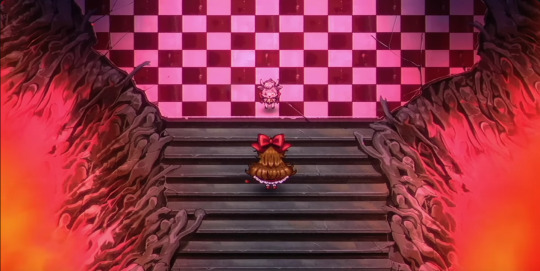
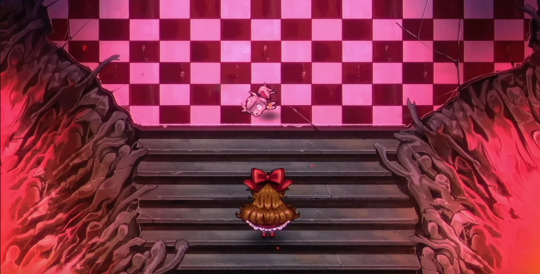


I don't know if the devs made it on purpose or not, but it's very interesting nonetheless.
#little goody two shoes game#little goody two shoes#pocket mirror#lgts#astralshift#little goody two shoes spoilers#lgts spoilers#ozzy little goody two shoes
21 notes
·
View notes
Text
Little Goody Two Shoes/Pocket Mirror Theory
(Spoilers for both Games below!)
In "A Boy's Midnight Journey", written by Henri, he mentions how he sees and talks to dead people at night. According to Word of God, this was a side effect of something.
In Little Goody Two Shoes, we find out Elise was made from Saint Walpurga and could see the Golden Girls at night. It's possible that his ability came from Saint Walpurga and the "dead" he sees were golden girls.
Also, in Goldia/Fleta's journal, she mentions a girl named Claire who went missing one day. Knowing that Ozzy takes people as sacrifices to see him... It doesn't look good for Henri nor Claire.
14 notes
·
View notes
Text
Walpurgis/Hexxen:
A Holiday of Duality.

This year was the first year I have ever celebrated Walpurgis/Hexxen.
We had a get together with close friends.
A small fire.
The night before had been spent venerating a cardboard likeness I made of St. Walpurga; offerings of fruit and rose petals were made. We approached her with prayers for protection, and petitioned her for prosperity.
The next night, we burned her.
I feel this holiday occupies the opposite side of my own personal "Wheel of the Year" from Hallows-Eve. Where that holiday is meant for reflection and reverence of the dead- this one is an affirmation of life and a celebration of those who are living.
The word "witch" has been used to persecute many people; Jewish, Islamic, LGBTQ, as well as PoC, and so I feel it is now more important than ever to affirm our exisistence. Therefore, the "witches" will get their justice and burn the symbol of a world that wishes for their destruction. In doing so we free St. Walpurga from her physical representation, hoping that she will carry our prayers with her.
When we burned the effigy the wind kicked up. We threw the offerings in, reducing orange peels, strawberries and flowers to ash. We then presented a rock, and asked the Freed Saint if she would be good enough to assign a local spirit as our protector and guardian.
The wind kicked up again.
Howled, as the sky went gray.
The spirit attached itself to the rock, and it is now our happy responsibility to honor and praise it as a sign of gratitude for its pressence in our lives.
#magic#folk magic#spirituality#walpurgisnacht#hexxen nacht#magic practitioners#folklore#holidays#'wheel of the year'#upg
44 notes
·
View notes
Note
It’s me again,
So I actually will celebrate Walpurgisnacht at the Blocksberg this year. Needless to say, I won’t go naked (like witches do) but as a modernized, female version of Mephistopheles from Faust. Corset etc will hopefully arrive soon.
Do you think Mephisto actually celebrates it even though he is an outcast among demons? In Faust, Mephistopheles is the Master of witches. Does it apply to the AnE universe too?
Oh you bet he does!
Its a big ass party filled with horny, weird, crazy humans (and demons/elves/witches, supposedly) Why, the party couldn't start without him! Or if it did, he'd be deeply offended lol.
What's more, Walpurgisnacht would be just the sort of party he would crash in Ye Olden Times given that it started as a Christian, holy festival to repel witches. Go back a bit and you get Beltane, the party he'd really like to be a part of, a coinciding Wicca festival dedicated to the appeasement of Fair Folk by, basically, conjuring a protective fire spirit Myodha style, actually. (Who knows, maybe Ucchusma? Even Karura?). There was a bunch of other stuff done in the name of appeasing the spirits/gods, and in particular a god and goddess of special interest to Samael:
If you go back far enough, Walpurgisnacht began as Beltane, which began originally as the veneration of the healing god Belenus and fertility goddess Belisama...
...which are the Celtic names of Apollo and Artemis, respectively.
Now Apollo is almost certainly kin of Lucifer, and Artemis is likely to be kin of Shemihaza - though personally I think they're both the hybrid children of the two gods, if such a thing is possible. Their mythos both coincide with that idea, since both twins have healing and nature powers and are the son and daughter of Helios, the sun God.
Either that or they're Nephilim of Lucifer, raised under Shemihazas influence. Or possibly each Nephilim in their own right, that were simply so close in age and intimacy they were regarded as twins or siblings. Who knows if canon will ever tell us. :)
Anyway, would it not be the most funnest thing ever for our pesky demon Lord to crash a party dedicated to his own niece and nephews honor? Lol. Especially as they double as the children of his bitter rival! Talk about having a crazy uncle!
So yes - I think he started crashing that party long ago to spite his brother and it's become a habit for him to just show up there. Enough of one that he's become expected even lol. Even after its conversion into the Christian commemoration of St. Walpurga, a lot of the traditions didn't change form, but they did change reason. What used to be fires to appease and repel bad spirits now were fires to keep witches, demons and the Devil himself at bay.
So even after the banning of Beltane he'd have just that much more reason to go since, Y'know, having the Devil crash the party of a Christian Saint is actually half the reason for the party in the first place - Why wouldn't he show up in exactly the place he wasn't wanted? Especially given all the fuss about keeping him away! 😆 Don't tell me he wouldn't have an absolute blast with that.
As to his connection with witches, I do think he has a special connection with them, as he does with many people's that are classically oppressed in or associated with his name (as the Devil).
Canon doesn't give us a lot of info about witches, only that the mothers of Nephilim are generally regarded as such. However, the guidelines on what constitutes witchcraft by Catholic interpretation actually includes quite a bit of what Exorcists do on the day-to-day, so 🤷. Given that he oversees one of the most active branches in the True Cross order and is the only true Ba'al still active on the Grigori Council, I would certainly, by any stretch of the Catholic meaning of witch, call him a Lord of Witches lol.
Hope that satisfies!
24 notes
·
View notes
Text
This Friday, the 30th of May, is Walpurgis Night! (Valborgsmässoafton, or simply Valborg, in Swedish). Walpurgis Night is celebrated in several European countries. It is a celebration of Saint Walpurga, but in Sweden it is, before anything else, a celebration of the arrival of spring. It is traditionally celebrated by gathering around huge bonfires. At the oldest universities in Sweden, a lot of more or less local Valborg traditions take place.
One tradition is that the student choirs gather before the bonfire is lit to sing songs celebrating spring. Längtan till landet, (longing for the countryside), is perhaps the most iconic one. It was written as a poem in 1838 by Herman Sätherberg, and arranged for a male choir in 1839 by Otto Lindblad. The song is often referred to by it's initial lyrics, "Vintern rasat" (Winter has been raging). The lyrics describe the snow melting away, to give way to spring and summer.
Although the song is traditionally sung by a male choir, here is an example of a version with a female student choir from the university of Lund, one of the oldest in Europe. The singers are, as is customary, wearing their student caps from their graduation from gymnasiet.
youtube
#valborg#valborgsmässoafton#walpurgis night#vintern rasat#längtan till landet#swedish music#music#swedish#sweden#langblr#svenska#1830's#choir#lund#bella voce#student culture#Spotify#Youtube
13 notes
·
View notes
Text
Hauskaa Vappua.
Klara Vappen.
Walpurgis Night, also called Vappu or Vappen in Finnish and Valborg in Swedish, is a holiday in Finland and Swedish, in line with Midsummer. Celebrated over 30th April – 1st May, the holiday marks the feast of Saint Walpurga (710 – 777 A.D.). Walpurga, sometimes also called Walpurgis, was a missionary who spread Christianity in Germany. She studied medicine, opened a monastery, and was believed to repel witchcraft. Her entombed remains are still said to secrete healing oil.
12 notes
·
View notes